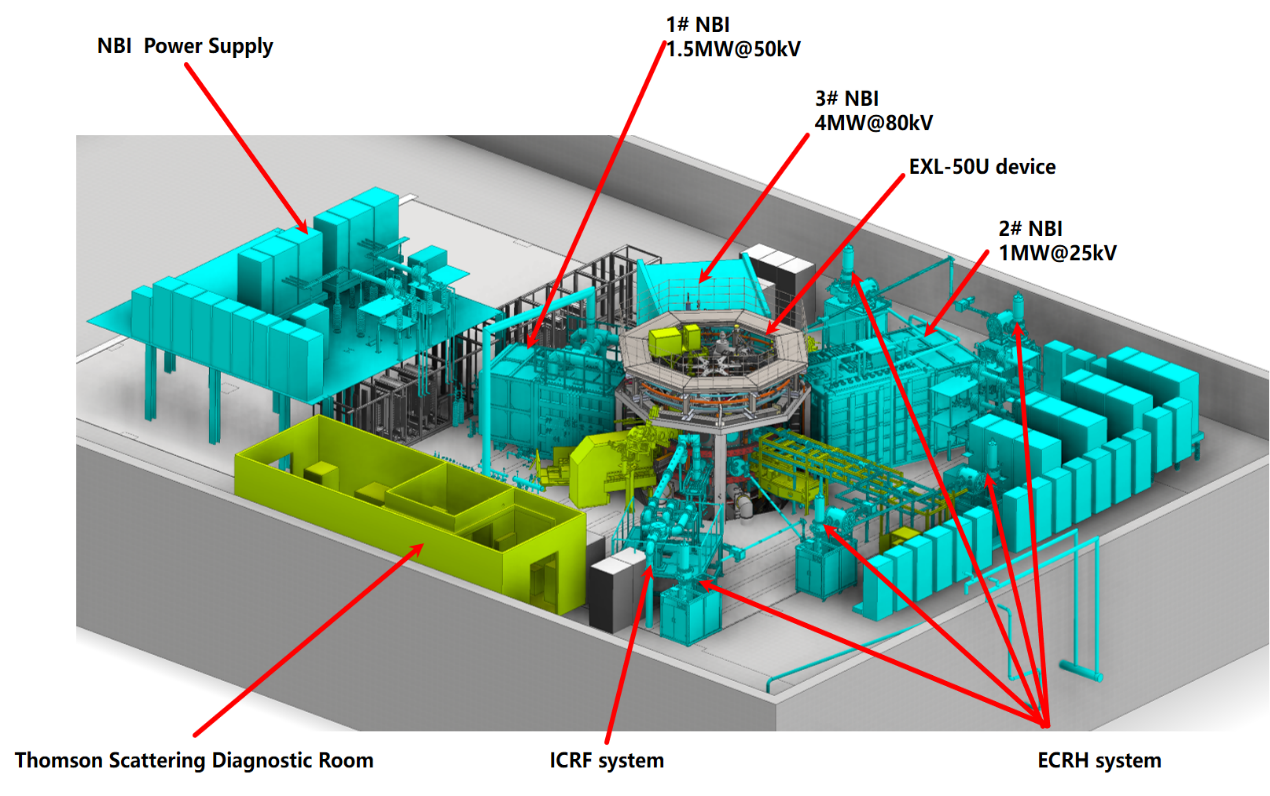
In August 2019, ENN successfully commissioned China's first medium-scale spherical torus device, the EXL-50 (Xuanlong-50). By 2023, the system underwent a major upgrade to EXL-50U. The EXL-50U achieved its first plasma in January 2024 and subsequently achieved a major milestone in 2025 by generating a plasma current of one million amperes (1 MA) using hydrogen-boron fuel, the first time in the world. The toroidal field (TF) coils operated stably at 150 kA, generating 1.2 T magnetic fields, thereby validating the magnet system’s full-load capability and fulfilling all engineering design targets. This success demonstrates the feasibility of p-¹¹B plasmas in compact configurations.

|
Parameters |
Values |
|
Diameter |
3.87 m |
|
Height |
4.55 m |
|
Major Radius |
0.6-0.8 m |
|
Minor Radius |
0.32-0.5 m |
|
BT @ R=0.6m |
1.2 T |
|
CS Flux |
1.2 web |
|
TF flattop duration |
2s @ 1.2 T 8s @ 0.6 T |
|
Plasma current |
0.5 – 1.5 MA |